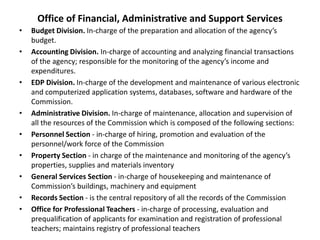- The NCMB formulates policies and develops programs and standards for promoting conciliation and mediation of labor disputes through preventive mediation, voluntary arbitration, and labor-management cooperation.
- It aims to sustain harmonious labor relations through education, alternative dispute resolution, and innovative worker empowerment approaches.
- The NCMB performs preventive mediation and conciliation, coordinates with other institutions, and administers voluntary arbitration programs to settle labor disputes.














































































